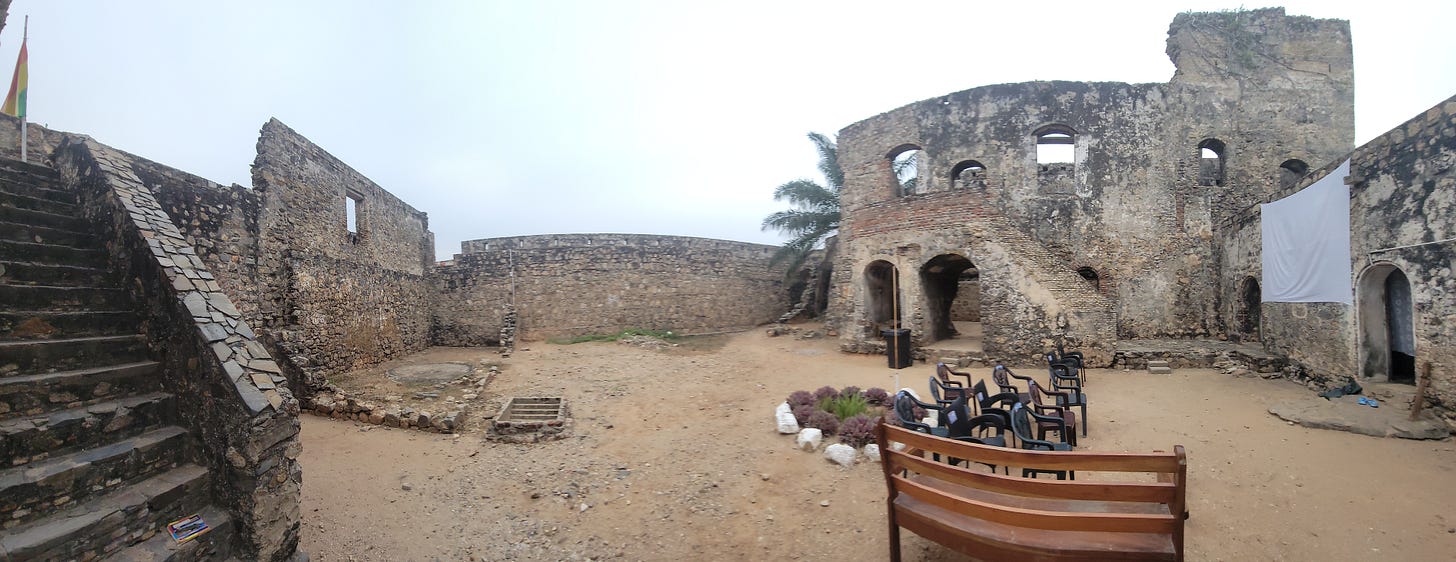
For some, the notion of a castle may conjure up images of riches, royalty or romance. In Ghana unfortunately, many castles (aka forts) tell stories of dungeons and demonic realities of the Trans-Atlantic slave trade. I walked through the underground holes in which humans (bodies, minds and spirits) were squashed and subjugated. Until the abolishment of the slave trade in 1865 in the US, the door of ‘No Return’ exiled humans from their home, brandished by hot iron with logos of the Portuguese, Danish, British or French. While people were sardined into slave dungeons - spaces smaller than we could fathom for even fleeting moments - up above, the juxtaposition of the living quarters and conditions of those in command boasted panoramic views worthy of primetime penthouse suites.


Unable to return to their lives, lands or loved ones according to the Trans-Atlantic Slave trade database, 12 million Africans were forced to flee, taking on tumultuous ship rides (with 2 million dying enroute) and ongoing oppression in the Americas. Their life before this was no picnic either. For those who can stomach the savagery, much has been documented about the kidnapping, abuses and inhumane conditions.
In Cape Coast, Fort Amsterdam and the Osu Castle in Accra, the door of No Return which once held terror for times ahead, now lead to semi-scenic waterfronts. Today, many not only tour and pay homage but for some, it also serves as a reclaiming.
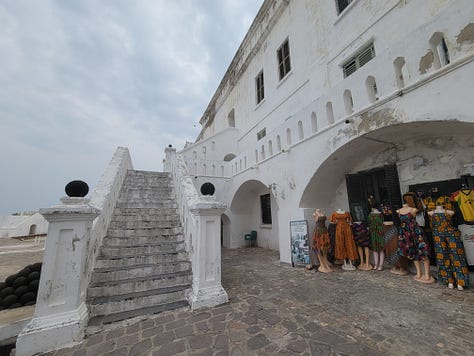
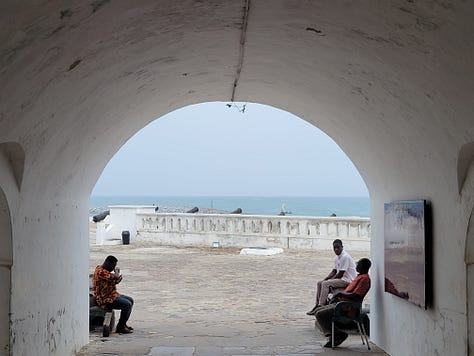
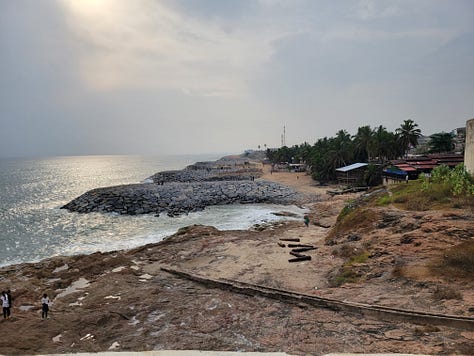

To that end, Barack and Michelle Obama inaugurated the plaque in Osu that reads ‘Akwabe’, the local greeting to welcome (back through the other side). The flip side of the door is now labeled ‘door of return’ to acknowledge the retracing and homecoming - and that we can easily turnstile back through un/consciously unperturbed. Those that have studied long term consequences, such as Harvard Professor Nathan Nunn suggests, “if the slave trades had not occurred, then 72% of the average income gap between Africa and the rest of the world would not exist today, and 99% of the income gap between Africa and other developing countries would not exist”.
The transatlantic slave trade seems somewhat like a keloid whose damage extends well beyond the initial site of the trauma and scarring - it then behooves our planet and people to be woke. I percolated … what active and practical contributions could we (continuously) commit to?
At Fort Amsterdam, the caretaker of this castle began his tour quite cantankerously. He chided us for not calling his cell, as per the scrawly sign on the wobbly wooden entrance gate. After a short harangue and impassioned tour of the fort, he relayed his vision to clear the bush at the apex of the compounds which now reveals a bayfront picturesque point with the Fort, once a lighthouse, at its edge.
He points to a picture of the future rendition of the dream: converting the area into a café with plastic seats and ‘some few things for people to eat, drink and to enjoy a view that you’ll never want to leave’. Converging the needs of today with the lessons of the past, he hosts a bible school within the fort - the white sheet up on the stone wall serves as his classroom screen. He took it upon himself to seek donations (each item labelled with a mugshot and name of the beneficiary). How amazing it was to see human initiative catalyze social consciousness!
An older gentleman, the caretaker recounted being hit by a motorbike in 2012, leaving him with some notable injuries. Suddenly stopping in his track, his eyes locked with mine he said, “never mind my body, ask me how strong I am?” He tells stories of those that didn’t recognize his gratitude to Jesus, or see that beyond his physical limitations, he wasn’t a usual underdog.
Then the old man, in spite his frailty and limp continues, “None of it matters. Never mind my body, I am strong - like the Bible”. Mic drop.
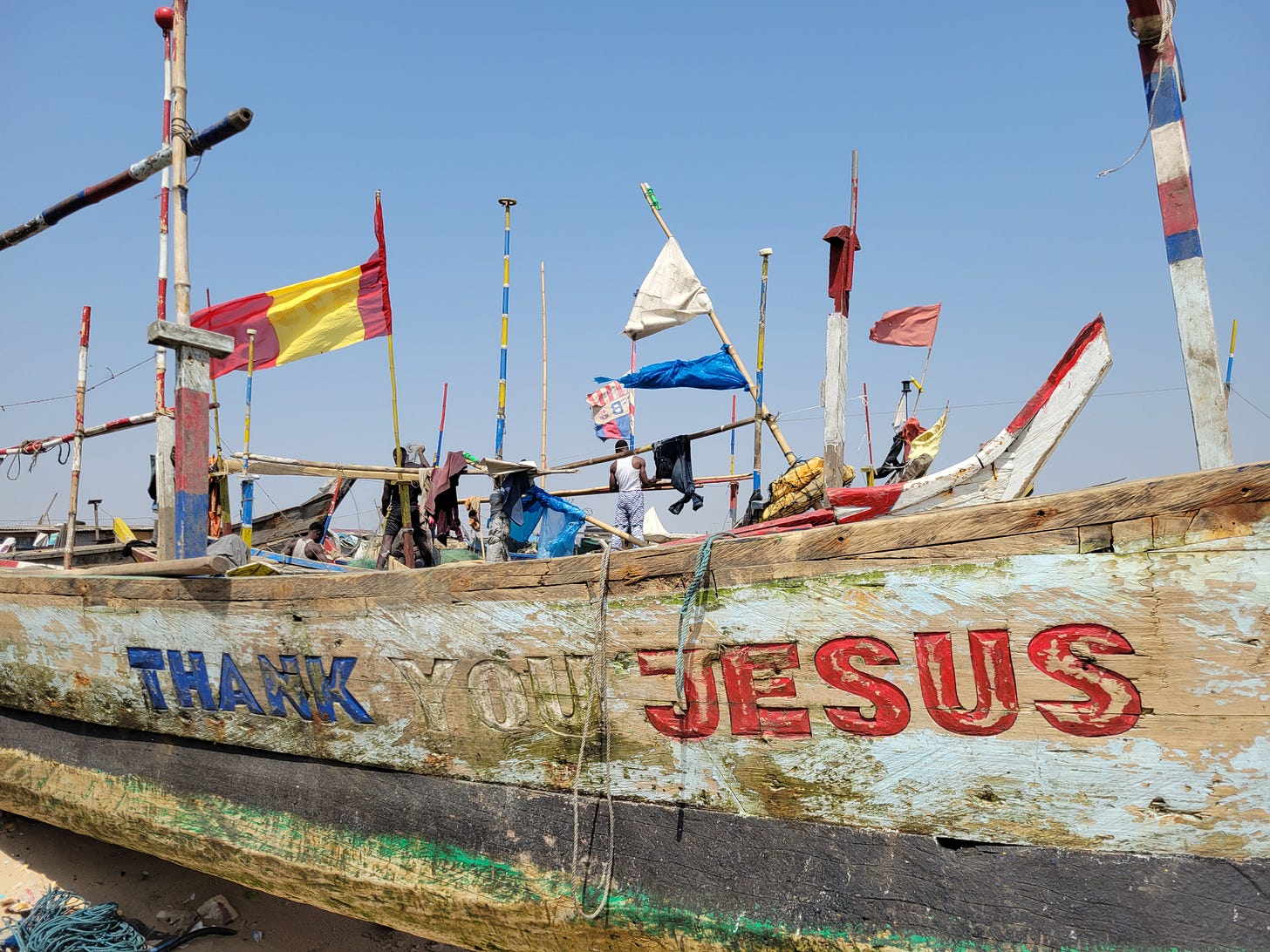
May we too know, feel and use our inner strength to walk in a good way every single day,







